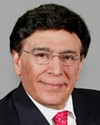First off, I'd like to thank the chairman and the committee for the opportunity to come here and speak with you today to share the results of some of the work we've been doing within my organization.
In my opinion, Canada's mission in Afghanistan is critical to success in Afghanistan. I would also take a moment to thank the Canadian people for the commitment they have made in the country. I do appreciate that there's ongoing controversy and some debate here in Ottawa and across the country about Canada's role in the country. I hope that my testimony, which is derived from an independent assessment of progress, will provide this committee and other Canadians with valuable insights into Afghan experiences with the reconstruction and development efforts, with the security efforts, as well as highlight some steps that we believe will be critical to ensure that Afghanistan remains on a path of recovery.
I will be speaking to you as an expert from CSIS, the Center for Strategic and International Studies, and although it's based in the U.S., I want to highlight that it is an independent organization. It's independent of the U.S. government and its interests. Our mission at the post-conflict reconstruction team is to advance global security and prosperity by offering strategic insights to the issues that policy-makers will need to work on in order to fight for a more peaceful world. Therefore, when I say “we” in the rest of my comments, I'm referring to the international community, the larger groups of players that are involved in Afghanistan.
Our team at CSIS works to address three chronic challenges the international community faces in post-conflict missions. First, we attempt to anticipate better by improving our analysis and understanding the context and improving our preparation.
Second, once the international community decides to intervene, we develop more integrated strategies by forcing ourselves to make clear choices and by setting priorities.
Third, CSIS attempts to improve on the nature of international communities' reporting of the mission. More often than not, we find that UN agencies, NGOs, our governments, report on a wide range of successes in their projects, yet the country they're working in might be faced with overwhelming pessimism and negative momentum.
We'd like to talk about the money spent, the number of projects completed, and grand plans for social transformation, rather than outcomes and the real results of our efforts on the local beneficiaries.
The CSIS measure-of-progress model, which we applied in Afghanistan in 2005 and again in 2006, attempts to address this problem of imperfect information by combining sources and measuring impact from the perspective of the local communities.
We take all the polls and focus groups that are conducted by a number of organizations, we take daily news reporting from in the country and around the world, official documents and releases, and then complement them with hundreds of interviews that we conduct in the field, as well as 1,000 structured conversations with the local population.
Once all this data is collected, we crunch it in numerous ways to gain regional and strategic insights, demographic insights, and we differentiate by pillars, such as security and governance.
In Afghanistan, we conducted our first assessment in 2005. At that time we saw that Afghanistan had crawled out of its subterranean existence of 2001 and was at its best point in decades. There was a hopefulness about the new leader, the return of millions of refugees, successful fighting of a brief war, and construction of many new facilities, including schools, roads. Through this time, the international community was conducting activities that it was comfortable doing, things that we knew how to do, such as conferences, elections, constitution writing, and playing a humanitarian role.
By 2005 we found that there was some tempering of hope within the Afghan population. Our recommendations at that time suggested we needed a more decentralized and entrepreneurial approach to recapture Afghan imagination and participation during the transition phase, the transition to development.
Over the past year, improvements have been made in certain areas, such as health, communication, economic growth, women's empowerment, public participation, and private investment. Yet the most critical challenges from the beginning of the intervention, such as pervasive corruption, the role of warlords, the economy's poppy dependence, chronic poverty, and electricity scarcity remain.
Our findings this year show that Afghan ability to meet their needs and interests has not improved despite more money spent, projects implemented, and time passed. The government is perceived to be less legitimate and less capable. Overall, Afghans are worried about their public safety and losing confidence in the new order. They wonder when they will see the benefits promised to them in 2001.
It's not that Afghans think that all is lost; rather it's more uncertainty about who will win and real intimidation on the ground, and therefore a return to Afghans finding a way to make it on their own, to self-protect, and to disengage from the national processes and initiatives that the international community is organizing. This all becomes a problem for restarting the nation.
Last year's negative trends, we believe, can be turned around. Securing Afghans is going to be the priority. Public safety has deteriorated since 2006 due to the violence surrounding the insurgency, the inability of the Afghan government to combat crime, local commanders, warlords, and abusive and corrupt elements within the new order, including government officials and the police.
The insurgency has gained momentum, as you know, in the south and east over 2006. They're comprised of a diverse group of anti-government elements, but it is the Mullah Omar-led Taliban, that faction with its charismatic leadership, its tribal connections, that serves as the greatest strategic threat. They are waging an effective campaign to expose and exploit government weaknesses, our own mistakes, and to win hearts and minds.
The ordinary Afghan is feeling caught among the Taliban, the military operations, and corrupt government officials; all sides are threatening their safety. Freedom of movement has become more limited, and therefore access to services and economic opportunity is more difficult. New high-risk populations and displaced populations have been created by the international military operations. They're in need of humanitarian assistance and basic needs.
We found that most Afghans see the international forces as necessary to their security--necessary for stopping the insurgency and protecting villages--but rising civilian casualties, the negative effects of the eradication efforts in the country, and the garrison mentality has lost us many friends and potential partners.
With current resources, the international community is not going to be able to secure all the remote parts of Afghanistan. It can, however, focus on the centre of gravity in Helmand and Kandahar. This is where we believe the threat of the insurgency is greatest, not only because they're being bombarded daily by the repercussions of that insurgency, but also because the reverberations of what happens in Kandahar and Helmand are felt very much throughout the whole country. We found that in the north and in the west, Afghans might not have experienced direct conflict, but they had a perception that the recovery of the country was in a precarious position because of the events happening in the south and east. In addition, these two provinces are also home to 50% of the poppy growth and criminal business and include patchy government leadership.
What is needed is an improved response in a majority of the districts in these two provinces. We need to get down to the local level. The ANA and ANP, local officials, and populations will not stay and fight the better-equipped Taliban or indeed participate in the programs we are organizing through our development efforts if there is no capacity to back them up when times get tough and if there's no ability to secure them while they participate with us.
Security resources from the north and west must be diverted to the south, particularly more mobile resources, such as special operations forces and helicopters to back up your own Canadian soldiers and also the British soldiers who are engaged there. I don't think caveats are going to change any time soon, so we need to be a little bit realistic about how that can happen. There are resources in the country that are not being used effectively, that can be diverted. Recent steps such as the U.S. support of Operation Achilles and NATO soldiers who are working to secure the Kabul-Kandahar highway should serve as a precedent for greater security and coordination in this difficult area.
It's also going to be critical to secure a post-operation security presence in these districts. It must be maintained by responsibly deploying the most capable of our Afghan forces, our partners, to stay and protect those villages. The ANP, our findings show, has received particularly low marks from Afghans, and they're often labelled a source of insecurity rather than law and order. This institution will require reform before they can be deployed to stay and protect. However, the ANA does enjoy broad support from the Afghan people. They're becoming more operationally capable, and they can be used to stay and protect Afghan villages. Only with this guarantee can villagers return to the places they've been displaced from and become direct beneficiaries of development efforts.
We believe Canada is needed in the south. The issue is how to get the Canadian forces what they need from the other NATO countries to improve their response to the direct challenges the Afghans face. Insecurity and the threats made by the Taliban and criminal groups displace the partners of development, and therefore security will be critical to conducting our development work.
In the north and west we see the benefits of good security. Where there is no direct armed conflict, armed opposition to the government, the international partners and government have been able to do much more to improve Afghan lives and our development dollars have gone much further.
On the reconstruction and development front, there have been positive changes, but they've been slow to impact Afghans. We find the macroeconomic climate has improved significantly over the last year. GDP growth has increased to $6.7 billion in 2006. There has been a double-digit increase in trade and a 100% increase in government's ability to collect revenue. A number of small and medium-sized enterprises have sprung up, particularly in construction and agribusiness. The banking industry has taken off, as has the communication industry, and new foreign investment has entered the country.
However, despite these high records of GDP growth, when asked what has been the most important accomplishment of the central government, only 3% of Afghans say it has been economic growth. In essence, the improvements in the economy have not trickled down to the ordinary Afghan. Most people lack steady jobs, particularly the kind that provide a reliable income throughout the year.
Afghans remain caught in endless cycles of debt. Poverty is fuelling the anger towards the central government and motivating many young men, particularly in the south, to rearm and fight with the insurgency or with local armed groups to earn cash.
The flagship national solidarity program has brought a number of visible improvements at the village level and has allowed Afghans to participate more directly in the governance process. However, limited access to markets and credit continues to prevent the growth of licit, value-added agricultural production, and in many areas, security risks and high operating costs due to the lack of affordable infrastructure such as water and electricity and available mid-sized loans continue to frustrate Afghan businessmen and entrepreneurs.
It's our belief that reconstruction efforts to date have been too Kabul-centric. Much of this is driven by a class of Afghan leadership that is threatening the entire enterprise with exclusionary, corrupt, and controlling practices. Traditional donor constraints are also to blame. Large-scale contracting, the need for certifiable partners, dependence on central government, and the expenditure of funds has become a standard way of doing business for many donors.
We believe the best way to ensure that R and D funds go further, particularly in the tough southern provinces, is to engage ordinary Afghans, from planning to implementation. The process is as important as the programs. At various times, from shuras to micro hydro projects to informal government justice structures, Afghanistan has shown the value of local ownership.
We believe we need to seize on a venture capital model and look beyond the government for partners. We should set a three-year horizon during which 50% of the international portfolio is converted to smaller, fast-tracked grants and loans, not for more quick impact projects but to unleash Afghan entrepreneurial spirit by supporting a new class of loan and grant agents. Women's centres, business unions, NGO consortiums, community leaders, tribal elders, even cellphone dealers, are all potential partners that can use small grants of money effectively.
We should also pay the key agents of change, such as teachers and police, to create and support the Afghan middle class of the future. Lots of good things are happening around the country, but donor constraints must be re-examined and new funding and liquidity must move in the direction of real people. We can leverage existing structures. Some new government programs are working; moreover, some traditional mechanisms from the past are working and have quite a bit of legitimacy amongst the Afghan people.
We recommend expanding, scaling up, ensuring resources for the national solidarity program, and engaging the informal justice sector. We also believe we should redistribute development budgets more directly to the subnational level. All these things will push the liquidity down and decentralize it to where people can use it and be engaged.
Canada is leading by example and spending its R and D funds on projects that build loyalty and trust and are led by local people. Canada's aid agency should continue to look for more partners beyond the state--in the private sector and civil society, with traditional institutions and tribal leaders--empowering the middle class and entrepreneurs.
In Kandahar, big development projects will be difficult, given the security situation. Yet the humanitarian needs are great and are increasing with the military operations. Canada is equipped to respond, and we'd like to see it play that role.
In conclusion, we believe that Afghanistan is a very tough place to work. Even with full international support and sound policies and programs, it will likely take 10 years to get to a point of stability and recovery. Even at that time, it's likely to be a poor and very underdeveloped country. The central government will struggle to retain legitimacy, collect revenues, and extend its presence, and Afghans will continue to rely on local institutions to fill the vacuum left by the state. Neighbours are likely to continue to meddle in Afghanistan's domestic policies and economy, for better or worse.
This is a long-term project, and a long-term commitment is needed from the international community. But 2007 is a critical year. During this next year, the challenges are great. The Afghan government is losing legitimacy and is weak. Afghans are frustrated. And there is a direct challenge from an armed opposition group. Both Afghans and NATO countries are waiting to see progress before they fully commit to the long-term process.
We can turn around the negative trend lines in the next year or two, and Afghanistan can be back on the road to recovery. But our expectations have to be realistic. The primary goal in the short to medium term should be stability to a point where ordinary Afghans feel safe to invest and partner with us in the development and reconstruction projects.
Canada has played a leadership role in the country, one I would like to see more NATO countries emulate. The security and development strategy, in my opinion, is in line with what works best in Afghanistan. However, I think Canada can go one step further on the diplomatic front. The U.S. dominates the mission in Afghanistan, and it needs its allies that are committed to Afghanistan's recovery to push for better, more effective policies.
I have met officials from the Netherlands, Norway, Germany, Canada, and the U.K. who are all committed to making positive changes and to creating a unified approach to some of the tougher issues, such as the role of Pakistan and Iran, the approach to countering narcotics, short-term strategic planning, a geographic balance of reconstruction assistance, and international accountability. These officials from these countries need to be brought together and need to work together to influence U.S. and Afghan leadership. Canada, whose troops are in the most difficult area and who has respect in the U.K., the U.S., and throughout Europe, particularly for its thoughtful approach to post-conflict reconstruction, can and should play a more aggressive role on the diplomatic front. It is a critical niche role for Canada, and we would like to see more of it.
Thank you. I'm happy to take questions on any number of issues that you find pertinent.





